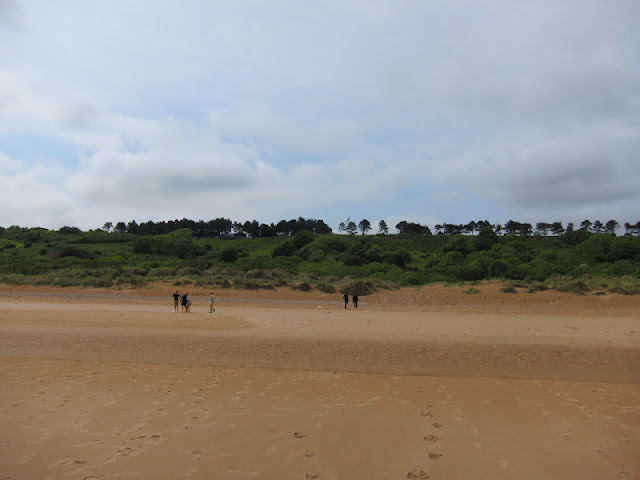Last week we visited the Normandy American Cemetery, Omaha Beach, Utah Beach, the city of Caen, France, Pointe du Hoc (west of Omaha Beach) and a few places in between.
On June 6, 1944 - now known as D-Day - Operation Overlord, the long-awaited invasion of Northwest Europe began with Allied landings on the coast of Normandy.
The Germans had turned the coastline of Normandy France into an interlinked series of strongholds, each with guns, pillboxes, barbed wire, land mines, and beach obstacles. Following an extensive bombardment of the assault areas, the Allies launched a simultaneous landing of U.S., British, Canadian, and French forces on five separate beaches code named:
Sword Beach (British)
June Beach (Canadian)
Gold Beach (British)
Omaha Beach (American)
Utah Beach (American)
Troops from three airborne divisions descended by parachute and glider on the flanks of the invasion area. When the seaborne units began to land about 6:30 AM on June 6, the allied soldiers stormed the beaches against fierce opposition from German gun positions and mined beach obstacles. They fought their way into the towns and hills and then advanced inland. By the end of the day, the Allies had landed more than 150,000 troops in France by sea and air. The eventual victory was a turning point in World War II and led to the liberation of Europe and the defeat of Nazi Germany.
This victory was not without great sacrifice from all Allied forces. Last week we attended an American Memorial Day event at the Normandy American Cemetery at Omaha Beach. This 172 acre cemetery contains the graves of 9,387 American soldiers.
This is Pointe du Hoc - a few miles from Omaha Beach - where visitors can see the remains of the amazing stronghold the Germans built and this battlefield remains much as it was.
Normandy American Cemetery and Memorial - Colleville-sur-Mer, France
On June 6, 1944 - now known as D-Day - Operation Overlord, the long-awaited invasion of Northwest Europe began with Allied landings on the coast of Normandy.
The Germans had turned the coastline of Normandy France into an interlinked series of strongholds, each with guns, pillboxes, barbed wire, land mines, and beach obstacles. Following an extensive bombardment of the assault areas, the Allies launched a simultaneous landing of U.S., British, Canadian, and French forces on five separate beaches code named:
Sword Beach (British)
June Beach (Canadian)
Gold Beach (British)
Omaha Beach (American)
Utah Beach (American)
Omaha Beach as seen from the cemetery
Taken from Omaha Beach looking up toward cemetery
Troops from three airborne divisions descended by parachute and glider on the flanks of the invasion area. When the seaborne units began to land about 6:30 AM on June 6, the allied soldiers stormed the beaches against fierce opposition from German gun positions and mined beach obstacles. They fought their way into the towns and hills and then advanced inland. By the end of the day, the Allies had landed more than 150,000 troops in France by sea and air. The eventual victory was a turning point in World War II and led to the liberation of Europe and the defeat of Nazi Germany.
This victory was not without great sacrifice from all Allied forces. Last week we attended an American Memorial Day event at the Normandy American Cemetery at Omaha Beach. This 172 acre cemetery contains the graves of 9,387 American soldiers.
Normandy American Cemetery with the English Channel in the distance
Memorial at Utah Beach
This is Pointe du Hoc - a few miles from Omaha Beach - where visitors can see the remains of the amazing stronghold the Germans built and this battlefield remains much as it was.
Craters left from air bombings
If you've never seen some of the amazing photos taken during this unbelievable and tragic wartime period . . . you probably should.
Here's a link to a fine gallery of photos. You can double-click on the first photo and click on "start slideshow" for each set of photos.
D-Day Photo Gallery












Wow, this is breathtaking! I haven't had a chance to comment on your visitors, but I love all the pictures!
ReplyDelete